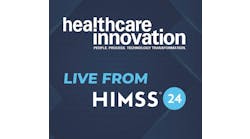Researchers from Regenstrief Institute and Indiana University’s schools of medicine and public health are working to enhance surveillance and detect trends related to long COVID. In collaboration with the Centers for Disease Control and clinical and public health partners, they will develop one of the first comprehensive, population-based surveillance systems for long COVID in the U.S.
The partners plan to use the public health informatics and surveillance structure of the Indiana Network for Patient Care (INPC) and the Regenstrief Notifiable Condition Detector. Mining data from EHRs statewide will enable more precise, data-driven estimation of the incidence and prevalence of persistent COVID-19 symptoms as well as measurement of the burden and outcomes on populations affected by long COVID.
The INPC is managed by the Indiana Health Information Exchange and is one of the largest health information exchanges in the nation. Regenstrief created the INPC and provides access to data for research purposes.
Complementing the data mining from existing data, they will also enroll children, adolescents and adults into the study to track the disease course of recent infections to gain an accurate reading of the burden and outcomes of individuals who have survived the virus.
“Long COVID conditions include a wide range of serious health consequences that occur more than four weeks after initial viral infection. Clinicians seek to know more about them and what to expect when patients show up with them for treatment,” said Regenstrief vice president for data and analytics Shaun Grannis, M.D., M.S., in a statement. “Anecdotal information about long COVID abounds, but what we need is accurate, comprehensive scientific evidence. Our study will provide critical information for public health, patients and the clinicians who care for people with long COVID.” Grannis also is a professor of family medicine at Indiana University School of Medicine.
The work is supported by a five-year grant expected to total $9 million from the CDC. Leveraging Indiana’s health information infrastructure and working with COVID-19 patient cohorts, the grant also supports the training of junior scientists who will be part of a future public health workforce with skills in public health informatics as well as data science. This will complement broader efforts at Regenstrief and IU Fairbanks School of Public Health to educate the public health workforce.
“We believe that the data will help us identify the most affected groups and geographic regions with higher disease burden, discern where health disparities exist and highlight potential barriers to care,” said Regenstrief Institute Center for Biomedical Informatics Interim Director Brian Dixon, Ph.D., M.H.A., in a statement. “What we learn from Indiana will hopefully lead to innovative approaches for monitoring and treating post-covid conditions nationally.” Dixon also is a professor of epidemiology at the Fairbanks School of Public Health.


